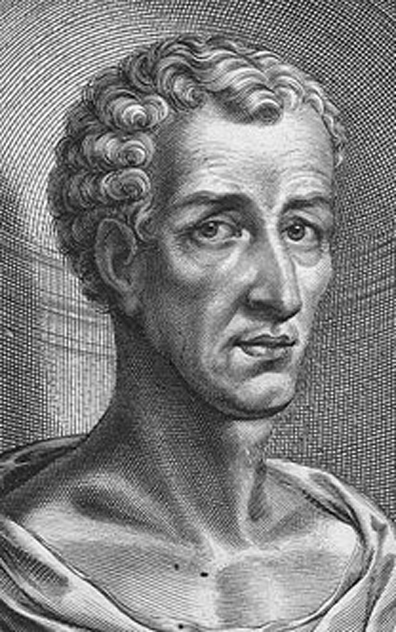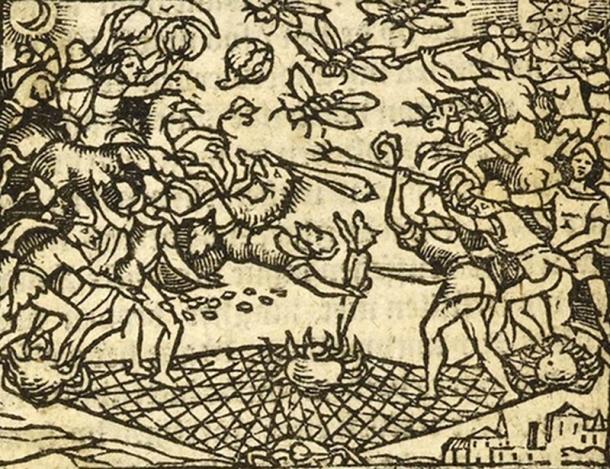By Wu Mingren, contributing writer, Ancient Origins
A True History (known in its original Greek as Alēthē diēgēmata, or in Latin as Vera Historia) is a story written by Lucian of Samosata, an author of Syrian / Assyrian origin who lived during the 2nd century AD. Lucian is famous for his satirical works, and ‘A True History’ may be read as a piece of satire. Alternatively, this piece of writing may be interpreted as a work of science fiction, which may make it the earliest known example of a work that can be placed within this genre.
Lucian was born around AD 120 in the city of Samosata, which used to be part of the Kingdom of Commagene, in modern day Turkey. Although this area was already part of the Roman Empire when Lucian was born, he was heavily influenced by Greek culture. This was due to the fact that this area of the ancient world was still part of the Hellenistic cultural sphere, which had been established by Alexander the Great and his successors. In addition to this, Lucian’s lifetime coincided with the Second Sophistic, which may have had a bearing of Lucian’s rhetoric.

Seventeenth century engraving by William Faithorne depicting a fictionalized portrait of Lucian. (Public Domain)
From Lucian’s works, we learn that he had initially trained to be a sculptor under his uncle. As the two fell out, however, Lucian left home, travelled to Western Asia Minor, and acquired a Greek literary education. Lucian then became an itinerant rhetorician, though he eventually settled down in Athens around the late 150s AD. It was during this period in Athens that Lucian took to writing, and 80 prose works have been attributed to him, though doubts have been cast on 10 of these. Some of Lucian’s works include Timon or The Misanthrope (which is said to have influenced Shakespeare’s Timon of Athens), Philosophies for Sale, and The Syrian Goddess.
A True History is also one of Lucian’s satirical work, though it has also been categorized as a work of science fiction. This piece of work is divided into two parts, and begins with the author’s voyage, together with 50 companions, westwards from the Pillars of Hercules, so as to learn about the peoples who lived beyond the Ocean. During the voyage, Lucian and his companions were blown off course, and landed on the island that Hercules and Dionysus had reached.

Illustration from a 1647 Dutch edition of Vera Historia showing the people of the Moon and the people of the Sun at war for the right to colonize the Morning Star, their aerial battle taking place on an enormous battlefield woven by giant spiders. (Public Domain)
The men explored this island, and a short time after leaving it, were taken up into the air by a whirlwind. Having sailed the air for seven days and seven nights, Lucian and his companions arrived on the moon.
Lucian writes about the inhabitants of the moon, as well as the adventures that followed. The alien species encountered on this journey into space – the people of the Moon and the people of the Sun – are battling to win the territory of the Morning Star. They are fighting in space and employ a comical and very earthly arsenal including, for example, catapulting giant radishes.
Lucian also wrote that it was men who gave birth on the moon. The child would be conceived, and carried in the calf. When the child was ready to be delivered, the calf was cut open. The new-born child would be dead, until they brought it to life by putting it in the wind with its mouth wide open. It may be said that such stories are a parody of Herodotus’ writings. Incidentally, the travellers would later meet Herodotus, who is being punished eternally for the lies he wrote in his work, The Histories.

A battle scene, Beardsley’s illustration in the 1894 edition of Lucian’s A True History. (Public Domain)
Whilst some have viewed Lucian’s A True History as satire, others have interpreted it as a work of science fiction, and it is not difficult to see the reasoning for this, as part of the story takes place in outer space. Apart from that, the occupation of the moon and the sun by extra-terrestrial beings may also be said to be comparable to the science fiction tales that have been written in more recent times.
Finally, it is unlikely that Lucian himself would have classified A True History as a work of science fiction, for the obvious reason that this genre did not exist during his time. Indeed, Lucian mentions that this is a piece of satire, as he writes at the beginning of this work that, “I tell all kinds of lies in a plausible and specious way, but also because everything in my story is a more or less comical parody of one or another of the poets, historians and philosophers of old, who have written much that smacks of miracles and fables.”









No comments
Trackbacks
Our apologies, you must be logged in to post a comment.